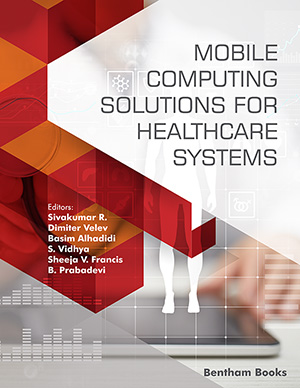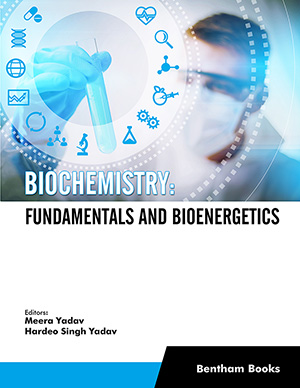Abstract
Background: Prickly pear "Opuntia ficus indica (L.) Mill. "otherwise known as the Indian fig tree, belongs to the family Cactaceae, and was known as a medicinal plant for its rich source of bioactive substances.
Objective: The present work aims to promote prickly pear seeds for traditional therapy by phenolic profiling and pharmacological tests of aqueous extract.
Method: An analytical quantification was performed by UV-Visible, and the identification of different bioactive compounds was done by HPLC-DAD. For pharmacological screening, an in vivo evaluation of the various tests, neuroleptic activity which consists of testing the recovery reflex; catatonic activity which is a test to detect catalepsy that can be characterized in animals by the administration of neuroleptic drugs; and for hypoglycemic activity a test was performed to assess glucose tolerance.
Results: The administration of aqueous extract of the prickly pear seeds at a dose (400 mg/kg) allows a reduction in blood sugar with a maximum decrease of one and a half hours compared to the control group.
Conclusion: This work makes it possible to postulate that the extract of prickly pear seeds is associated with a very interesting antihyperglycemic activity given its high content of phenolic compounds.
Keywords: Nopal, seeds, diabetes, hypnosis, therapy, pharmacological, phytochemical screening.
[1]
Koehn, F.E.; Carter, G.T. The evolving role of natural products in drug discovery. Nat. Rev. Drug Discov., 2005, 4(3), 206-220.
[http://dx.doi.org/10.1038/nrd1657] [PMID: 15729362]
[http://dx.doi.org/10.1038/nrd1657] [PMID: 15729362]
[2]
Gomes, C.; Lourenço, E.L.B.; Liuti, É.B.; Duque, A.O.; Nihi, F.; Lourenço, A.C.; Mendes, T.C.; Gasparotto, Junior, A.; Dalsenter, P.R. Evaluation of subchronic toxicity of the hydroethanolic extract of Tropaeolum majus in Wistar rats. J. Ethnopharmacol., 2012, 142(2), 481-487.
[http://dx.doi.org/10.1016/j.jep.2012.05.023] [PMID: 22633983]
[http://dx.doi.org/10.1016/j.jep.2012.05.023] [PMID: 22633983]
[4]
Tchamdja, K.M. Performance study of an artisanal extractor for the production of citronella oil. Biological works Engineer Thesis,
ESTBA, UB., 1995.
[5]
Guzman, U.; Arias, S.; Dávila, P. Reproductive biology of opuntia, A review. Proc. J. Arid Environm., 2006, 549-589.
[6]
Araba, A.; El Aich, A.; Sarti, B. Valorization of the prickly pear in breeding. Tech. Transf. Agri., 2000, 68, 1-4.
[7]
Schweizer, M. Doctor Nopal, the doctor of the Good Lord, Aloe Plants and Beauty; APB: France, 1997.
[8]
Habibi, Y. Contribution to the Morphological, Ultrastructural and Chemical study of the Prickly Pear. Wall Polysaccharides: Characterization and Modification Chemical. PhD Thesis, Josef University Fourier and Cadi Ayyad University: Morocco., 2004.
[9]
Kaanane, A. Techniques for industrial recovery of prickly pears. Proceedings of the 2nd national day on cactus cultivation, Morocco 30 May2000.
[10]
Piga, A. Cactus pear: A fruits of nutraceutical and functional importance. J. Profession Associat for Cactus Develop, 2004, 6, 9-22.
[11]
Feugang, J.M.; Konarski, P.; Zou, D.; Stintzing, F.C.; Zou, C. Nutritional and medicinal use of Cactus pear (Opuntia spp.) cladodes and fruits. Front. Biosci., 2006, 11(1), 2574-2589.
[http://dx.doi.org/10.2741/1992] [PMID: 16720335]
[http://dx.doi.org/10.2741/1992] [PMID: 16720335]
[12]
El Kossori, R.L.; Villaume, C.; El Boustani, E.; Sauvaire, Y.; Méjean, L. Composition of pulp, skin and seeds of prickly pears fruit (Opuntia ficus indica sp.). Plant Foods Hum. Nutr., 1998, 52(3), 263-270.
[http://dx.doi.org/10.1023/A:1008000232406] [PMID: 9950087]
[http://dx.doi.org/10.1023/A:1008000232406] [PMID: 9950087]
[13]
Cardador-Martínez, A.; Jiménez-Martínez, C.; Sandoval, G. Revalorization of cactus pear (Opuntia spp.) wastes as a source of antioxidants. Food Sci. Technol., 2011, 31(3), 782-788.
[http://dx.doi.org/10.1590/S0101-20612011000300036]
[http://dx.doi.org/10.1590/S0101-20612011000300036]
[14]
Bougandoura, N.; Bendimerad, N. Evaluation of the antioxidant activity of aqueous and methanolic extracts of Satureja Calamintha ssp.nepeta (L.). Briq. J. Nat. Technol., 2013, 3(9), 14-19.
[15]
Harborne, A. J Phytochemical methods a Guide to Modern Techniques of Plant Analysis; Springer, 1998.
[16]
Pande, J.; Chanda, S. Phyto-Physico-Pharmacognostic Study of Few Medicinal Plants of Gujarat;
LAP LAMBERT Academic Publishing Akademikerverlag GmbH & Co.: Germany, 2017, 6-8. p. 66121.
[17]
Hamadoun, A.T.; Bouatia, M.; Idrissi, M.; Draoui, M. Phytochemical screening and antioxidant activity of aqueous-ethanolic extracts of Opuntia ficus indica. J. Chem. Pharm. Res., 2015, 7(7), 409-415.
[18]
Benattia, F.K.; Arrar, Z. Antioxidative and antiradical activities of bioactive compounds of extracts from algerian prickly pear (Opuntia ficus-indica.L). Fruits. Curr. Nutr. Food Sci., 2018, 14(3), 211-217.
[http://dx.doi.org/10.2174/1573401313666170609101639]
[http://dx.doi.org/10.2174/1573401313666170609101639]
[19]
Abdel-Hameed, E.S.S.; Nagaty, M.A.; Salman, M.S.; Bazaid, S.A. Phytochemicals, nutritionals and antioxidant properties of two prickly pear cactus cultivars (Opuntia ficus indica Mill.) growing in Taif, KSA. Food Chem., 2014, 160, 31-38.
[http://dx.doi.org/10.1016/j.foodchem.2014.03.060] [PMID: 24799205]
[http://dx.doi.org/10.1016/j.foodchem.2014.03.060] [PMID: 24799205]
[20]
Diehl, K.H.; Hull, R.; Morton, D.; Pfister, R.; Rabemampianina, Y.; Smith, D.; Vidal, J.M.; Vorstenbosch, C.V.D. A good practice guide to the administration of substances and removal of blood, including routes and volumes. J. Appl. Toxicol., 2001, 21(1), 15-23.
[http://dx.doi.org/10.1002/jat.727] [PMID: 11180276]
[http://dx.doi.org/10.1002/jat.727] [PMID: 11180276]
[21]
Gülçin, I. Antioxidant activity of caffeic acid (3,4-dihydroxycinnamic acid). Toxicology, 2006, 217(2-3), 213-220.
[http://dx.doi.org/10.1016/j.tox.2005.09.011] [PMID: 16243424]
[http://dx.doi.org/10.1016/j.tox.2005.09.011] [PMID: 16243424]
[22]
Shahidi, F.; Janitha, P.K.; Wanasundara, P.D. Phenolic antioxidant, critical previous term reviews next term. J. Food Sci. Nutr., 1992, 32, 67-103.
[23]
Middleton, E., Jr; Kandaswami, C.; Theoharides, T.C. The effects of plant flavonoids on mammalian cells: Implications for inflammation, heart disease, and cancer. Pharmacol. Rev., 2000, 52(4), 673-751.
[PMID: 11121513]
[PMID: 11121513]
[24]
Bennick, A. Interaction of plant polyphenols with salivary proteins. Crit. Rev. Oral Biol. Med., 2002, 13(2), 184-196.
[http://dx.doi.org/10.1177/154411130201300208] [PMID: 12097360]
[http://dx.doi.org/10.1177/154411130201300208] [PMID: 12097360]
[26]
Al Juhaimi, F.; Mehmet, M.Ö.; Uslu, N. Effect of microwave heating on phenolic compounds of prickly pear (Opuntia ficus‐indica L.) seeds. J. Food Pross. Preven., 2017, 42(2), 1435-1449.
[27]
Ibrahim, K.A.; Unogu, O.I.; Bawa, Y. Studies on phytochemical and antioxidant properties of Opuntia ficus-indica. Dutse J. Pure Appl. Sci., 2017, 3(1), 134-141.
[28]
Brahmi, F.; Haddad, S.; Bouamara, K.; Yalaoui-Guellal, D.; Prost-Camus, E.; de Barros, J-P.P.; Prost, M.; Atanasov, A.G.; Madani, K.; Boulekbache-Makhlouf, L.; Lizard, G. Comparison of chemical composition and biological activities of Algerian seed oils of Pistacia lentiscus L., Opuntia ficus indica (L.) mill. and Argania spinosa L. Skeels. Ind. Crops Prod., 2020, 151, 112456.
[http://dx.doi.org/10.1016/j.indcrop.2020.112456]
[http://dx.doi.org/10.1016/j.indcrop.2020.112456]
[29]
Rtibi, K.; Selmi, S.; Saidani, K.; Grami, D.; Amri, M.; Sebai, H.; Marzouki, L. Reverse Effect of Opuntia ficus‐indica L. juice and seeds aqueous extract on gastric emptying and small‐bowel motility in rat. J. Food Sci., 2018, 83(1), 205-211.
[http://dx.doi.org/10.1111/1750-3841.13990] [PMID: 29165814]
[http://dx.doi.org/10.1111/1750-3841.13990] [PMID: 29165814]
[30]
Chougui, N.; Tamendjari, A.; Hamidj, W.; Hallal, S.; Barras, A.; Richard, T.; Larbat, R. Oil composition and characterisation of phenolic compounds of Opuntia ficus-indica seeds. Food Chem., 2013, 139(1-4), 796-803.
[http://dx.doi.org/10.1016/j.foodchem.2013.01.054] [PMID: 23561175]
[http://dx.doi.org/10.1016/j.foodchem.2013.01.054] [PMID: 23561175]
[31]
Mensah, K.B.; Benneh, C.; Boakye-Gyasi, E. Ethanol root extract of the African aphrodisiac mondia white Periplocacaceae posseses estrogenic activity. Int. J. Pharma Sci., 2015, 7(5), 284-287.
[32]
Benattia, F.K.; Arrar, Z.; Dergal, F.; Khabbal, Y. Pharmaco-analytical study and phytochemical profile of hydroethanolic extract of algerian prickly pear (Opuntia ficus-indica.L). Curr. Pharm. Biotechnol., 2019, 20(9), 696-706.
[http://dx.doi.org/10.2174/1389201020666190620113129] [PMID: 31258077]
[http://dx.doi.org/10.2174/1389201020666190620113129] [PMID: 31258077]
[33]
Oniszczuk, A.; Wójtowicz, A.; Oniszczuk, T.; Matwijczuk, A.; Dib, A.; Markut-Miotła, E. Opuntia fruits as food enriching ingredient, the first step towards new functional food products. Molecules, 2020, 25(4), 916.
[http://dx.doi.org/10.3390/molecules25040916] [PMID: 32085649]
[http://dx.doi.org/10.3390/molecules25040916] [PMID: 32085649]
[34]
Macheix, J.J.; Fleriet, A.; Jay-Allemand, C. Phenolic compounds in plants: An example of a secondary metabolite of economic importance; Ed, Presses Polytechniques & Universitaires. Lausane Romandes PPTUR, 2005.
[35]
Mangambu, M.J.; Mushagalusa, K.F.; Kadima, N.J. Contribution to the phytochemical study of some anti-diabetic medicinal plants from Bukavu and its surroundings (Sud-Kivu, R.D.Congo). J. Appl. Biosci., 2014, 75, 6211-6220.
[http://dx.doi.org/10.4314/jab.v75i1.7]
[http://dx.doi.org/10.4314/jab.v75i1.7]
[36]
Abd El-Razek, F.H.; El-Metwally, E.M.; Shehab, G.M.G.; Hassan, A.A.; Gomaa, A.M. Effects of cactus pear (Opuntia ficus-indica) juice on oxidative stress in diabetic cataract rats. Saudi J. Health Sci., 2012, 7(1), 23-29.
[37]
Berraaouan, A.; Ziyyat, A.; Mekhfi, H.; Legssyer, A.; Sindic, M.; Aziz, M.; Bnouham, M. Evaluation of antidiabetic properties of cactus pear seed oil in rats. Pharm. Biol., 2014, 52(10), 1286-1290.
[http://dx.doi.org/10.3109/13880209.2014.890230] [PMID: 25026333]
[http://dx.doi.org/10.3109/13880209.2014.890230] [PMID: 25026333]
[38]
Deldicque, L.; Van Proeyen, K.; Ramaekers, M.; Pischel, I.; Sievers, H.; Hespel, P. Additive insulinogenic action of Opuntia ficus-indica cladode and fruit skin extract and leucine after exercise in healthy males. J. Int. Soc. Sports Nutr., 2013, 10(1), 45.
[http://dx.doi.org/10.1186/1550-2783-10-45] [PMID: 24144232]
[http://dx.doi.org/10.1186/1550-2783-10-45] [PMID: 24144232]
[39]
Van Proeyen, K.; Ramaekers, M.; Pischel, I.; Hespel, P. Opuntia ficus-indica ingestion stimulates peripheral disposal of oral glucose before and after exercise in healthy men. Int. J. Sport Nutr. Exerc. Metab., 2012, 22(4), 284-291.
[http://dx.doi.org/10.1123/ijsnem.22.4.284] [PMID: 22805855]
[http://dx.doi.org/10.1123/ijsnem.22.4.284] [PMID: 22805855]
[40]
Aiello, A.; Di Bona, D.; Candore, G.; Carru, C.; Zinellu, A.; Di Miceli, G.; Nicosia, A.; Gambino, C.M.; Ruisi, P.; Caruso, C.; Vasto, S.; Accardi, G. Targeting aging with functional food: Pasta with opuntia single-arm pilot study. Rejuvenation Res., 2018, 21(3), 249-256.
[http://dx.doi.org/10.1089/rej.2017.1992] [PMID: 28851251]
[http://dx.doi.org/10.1089/rej.2017.1992] [PMID: 28851251]































